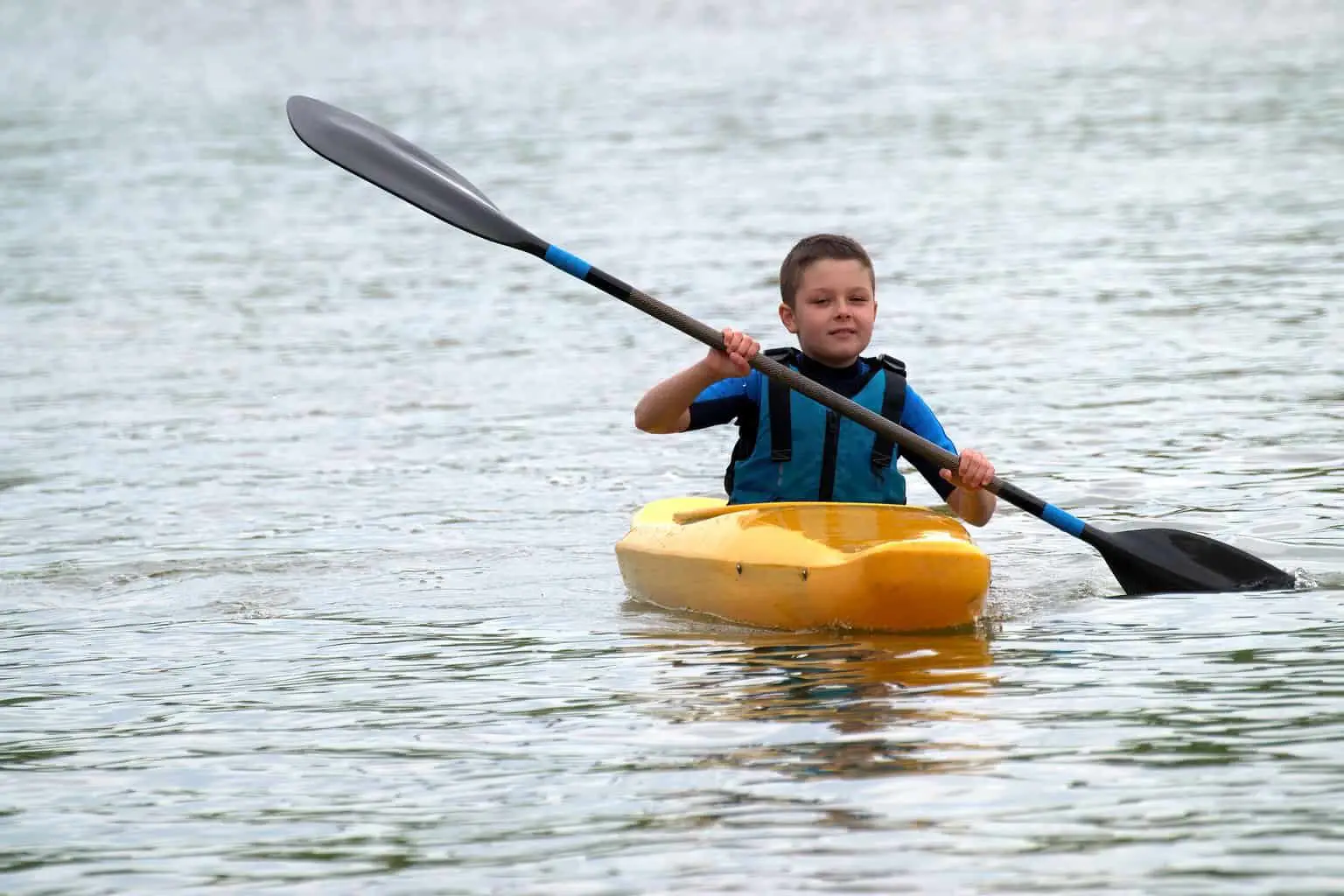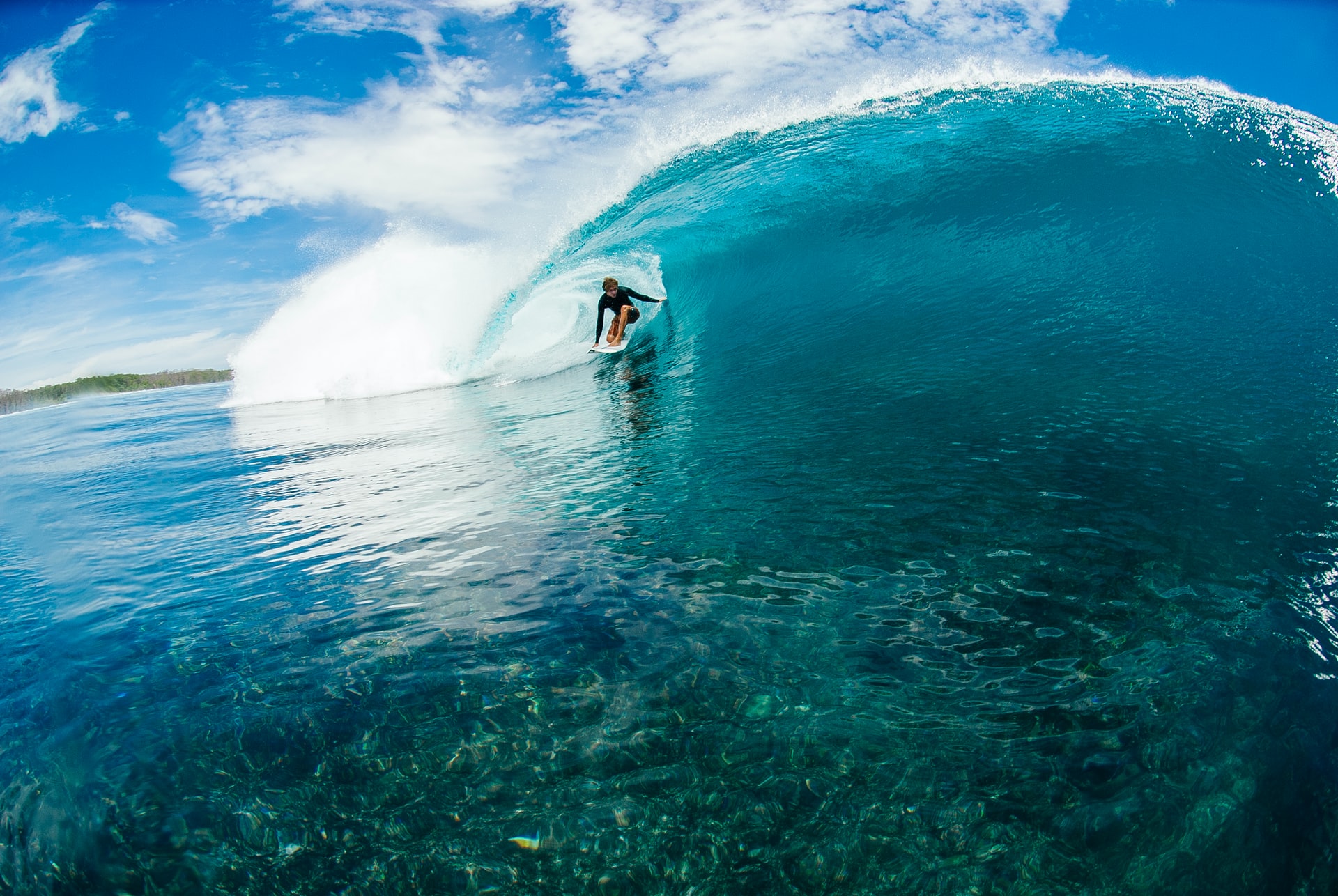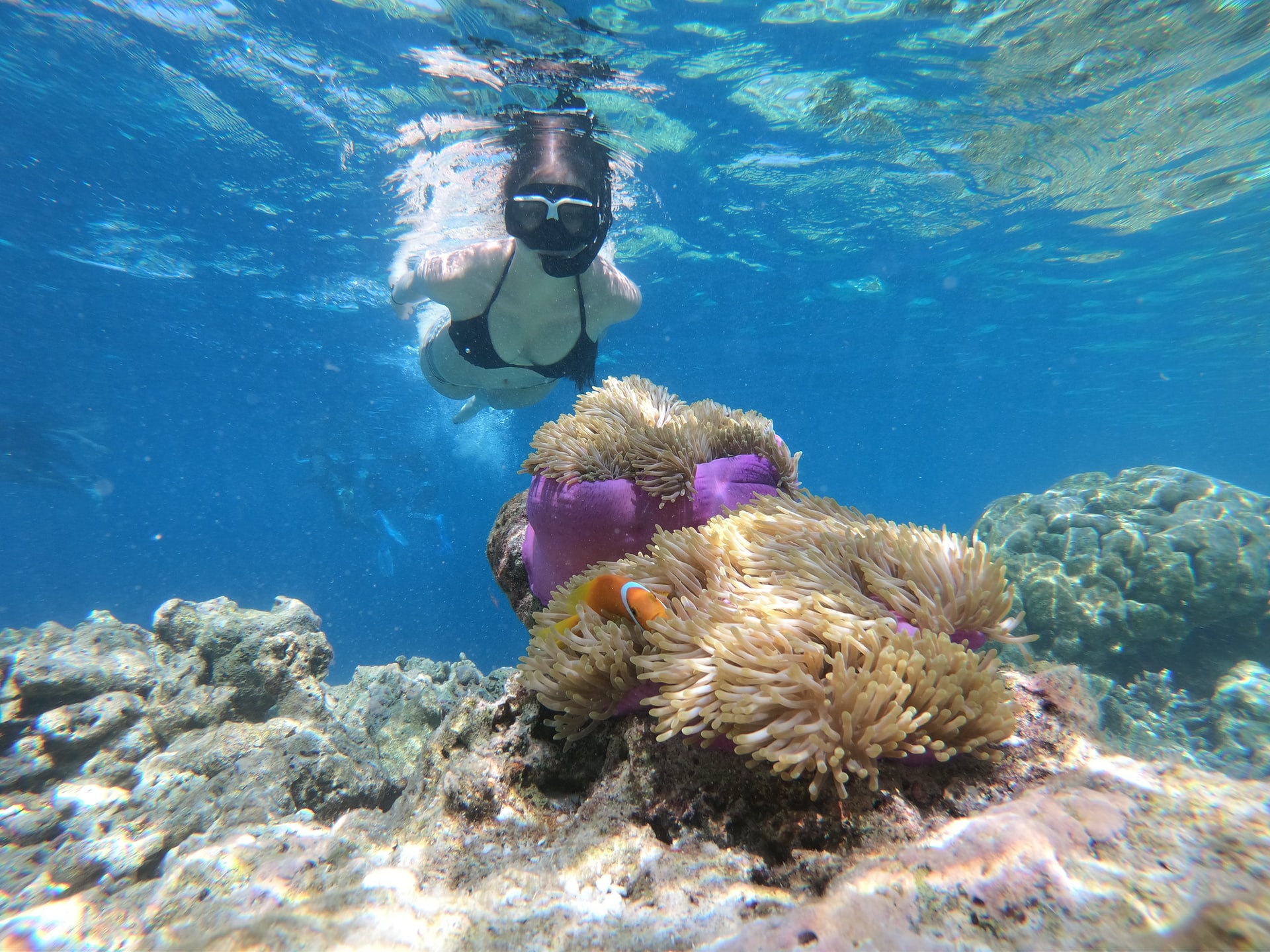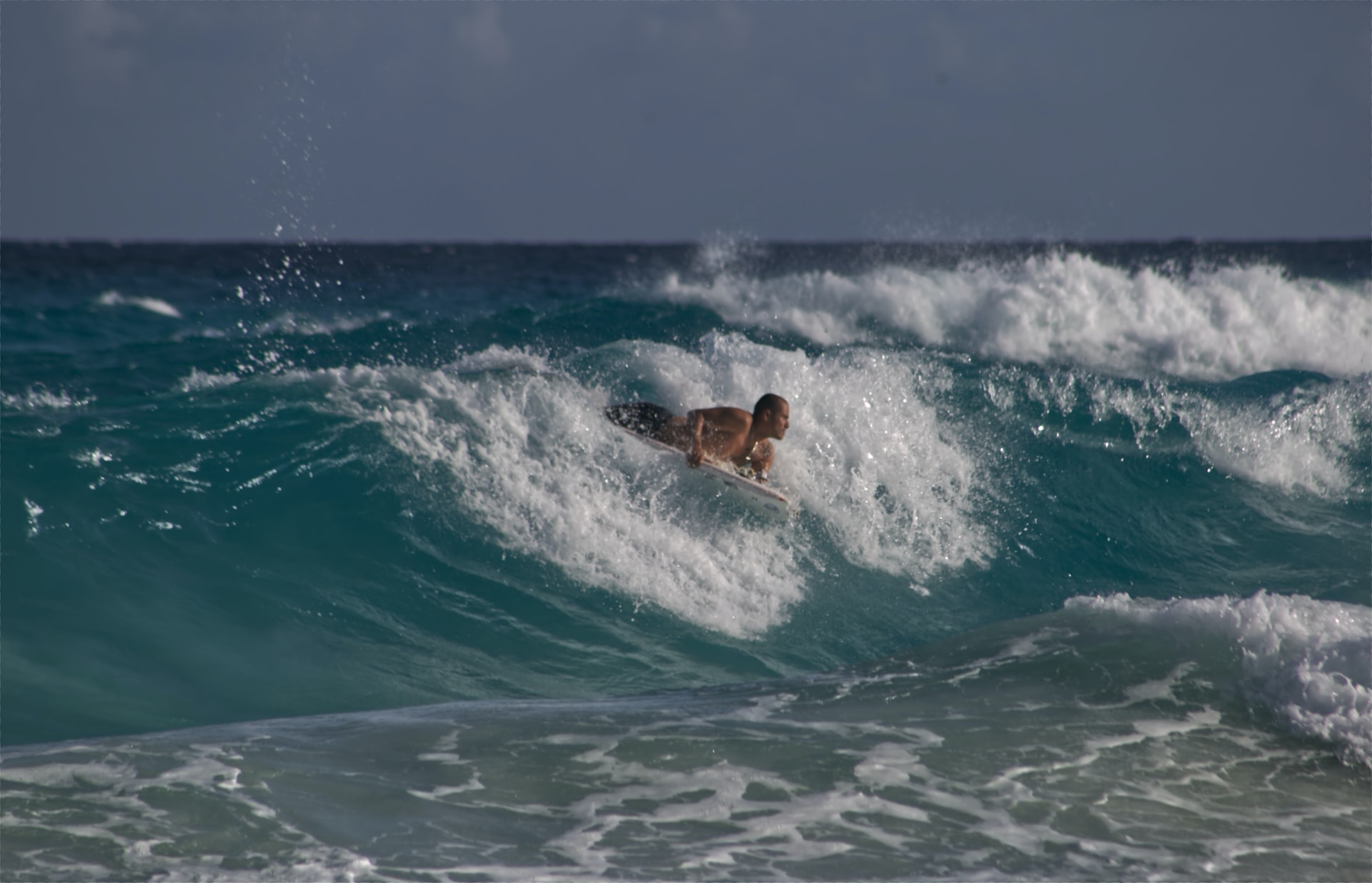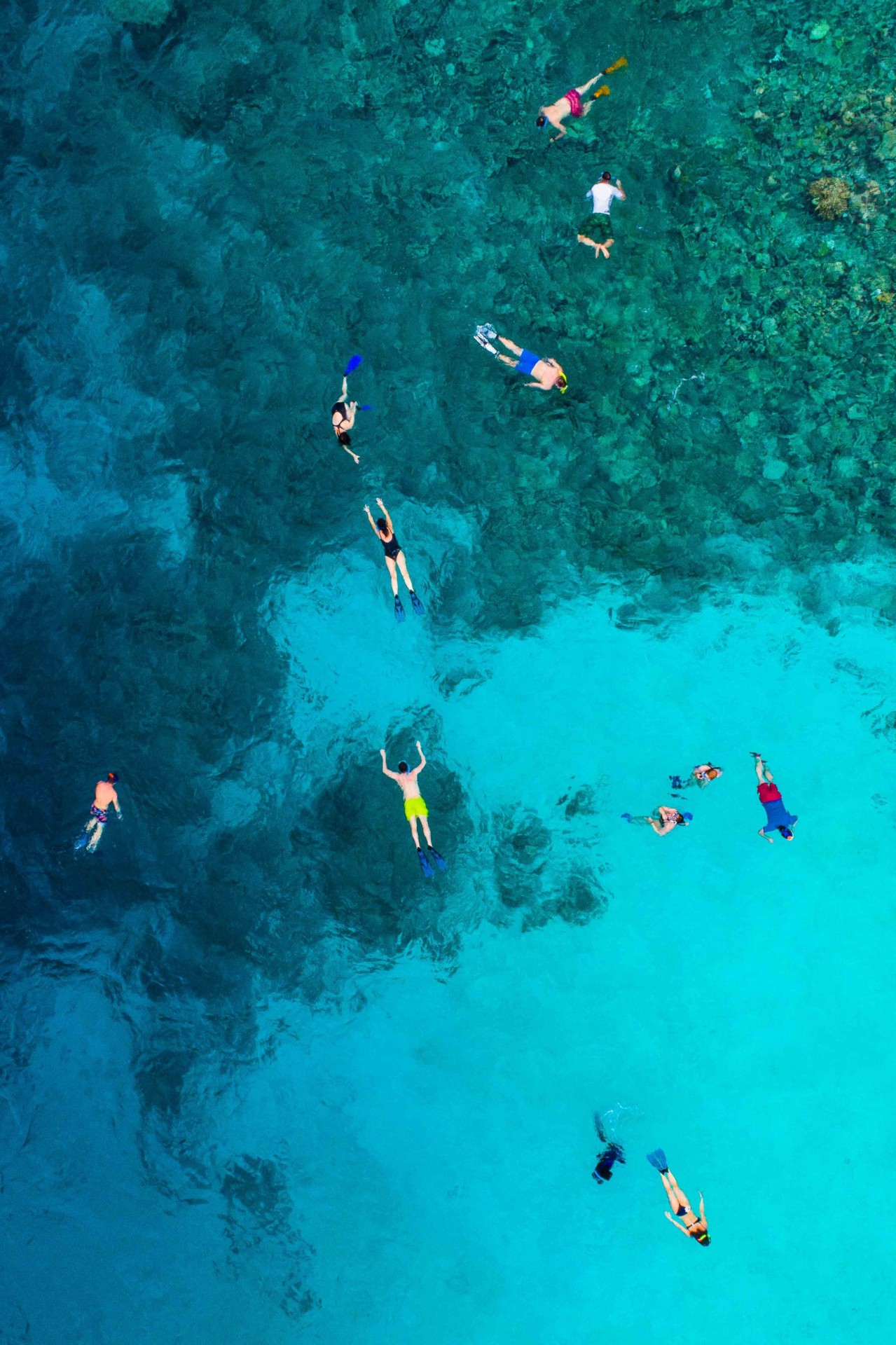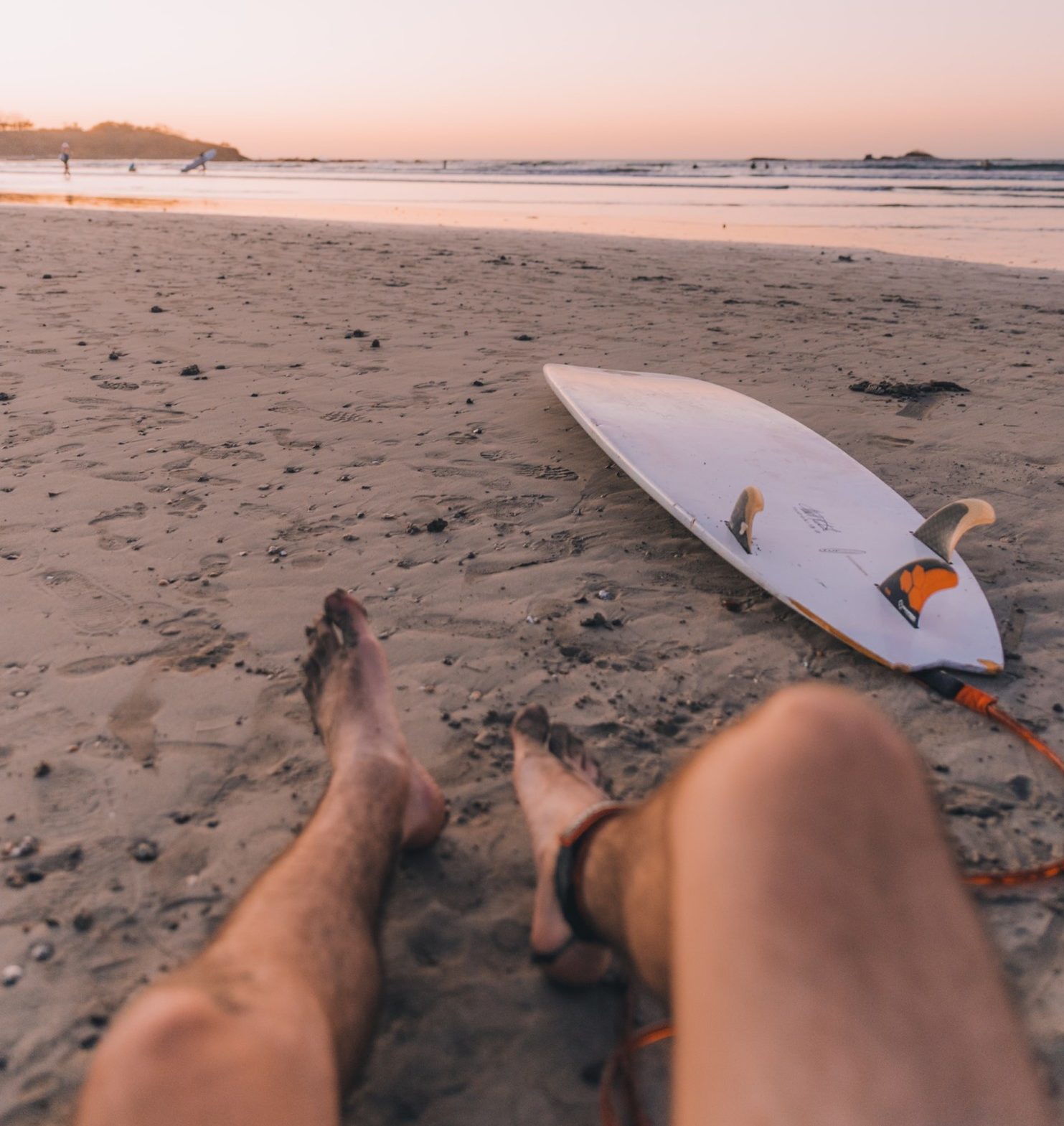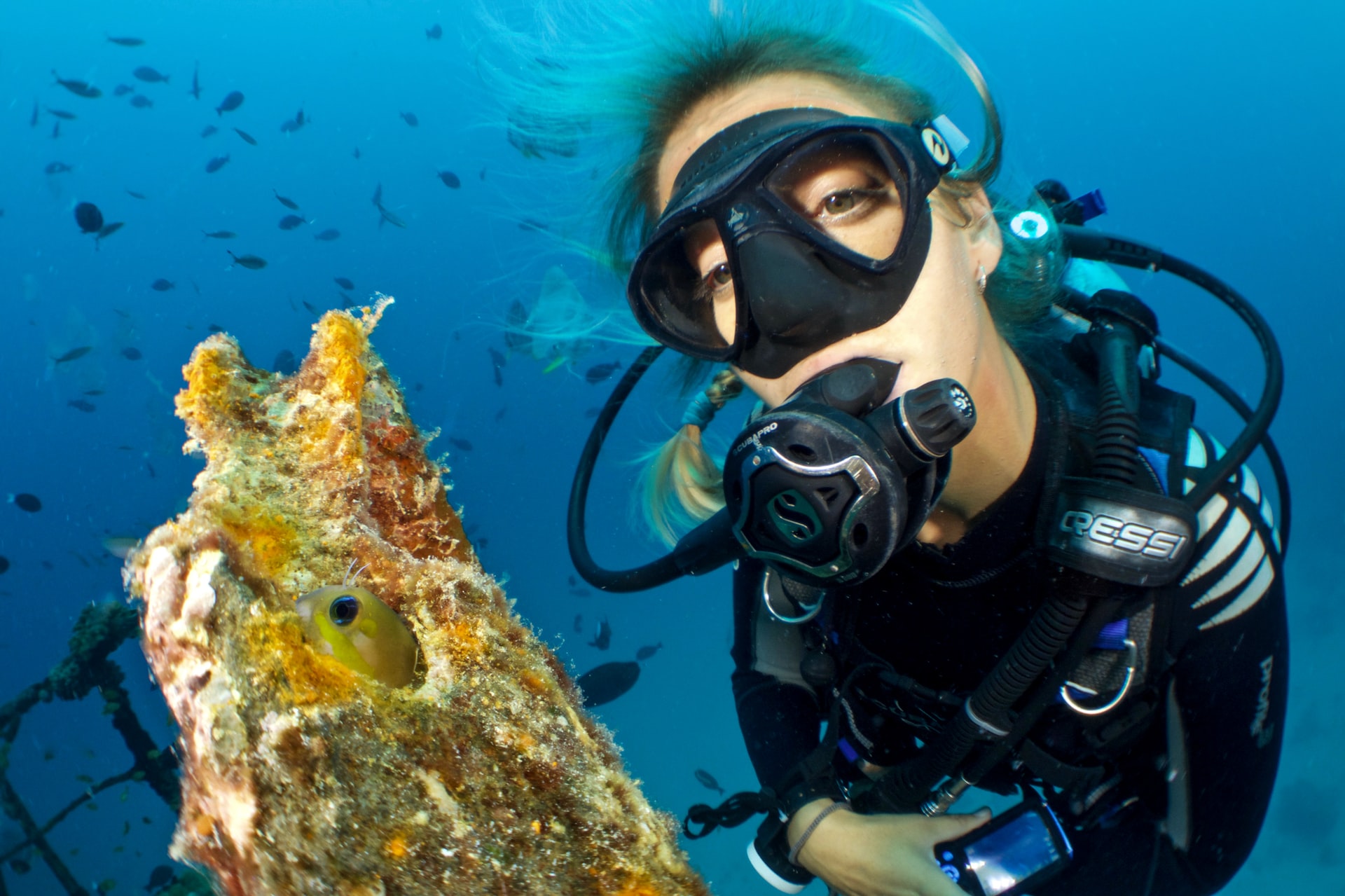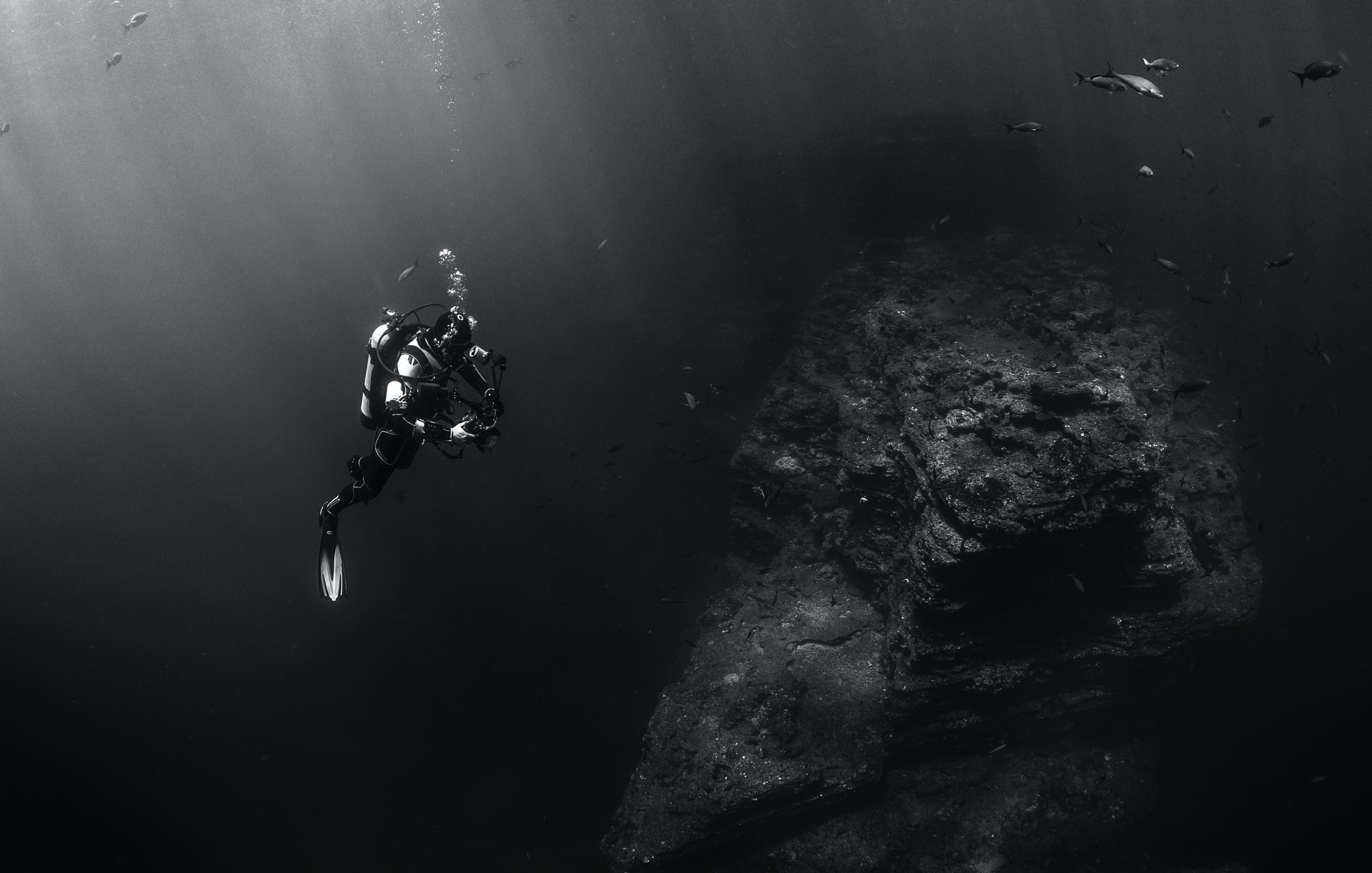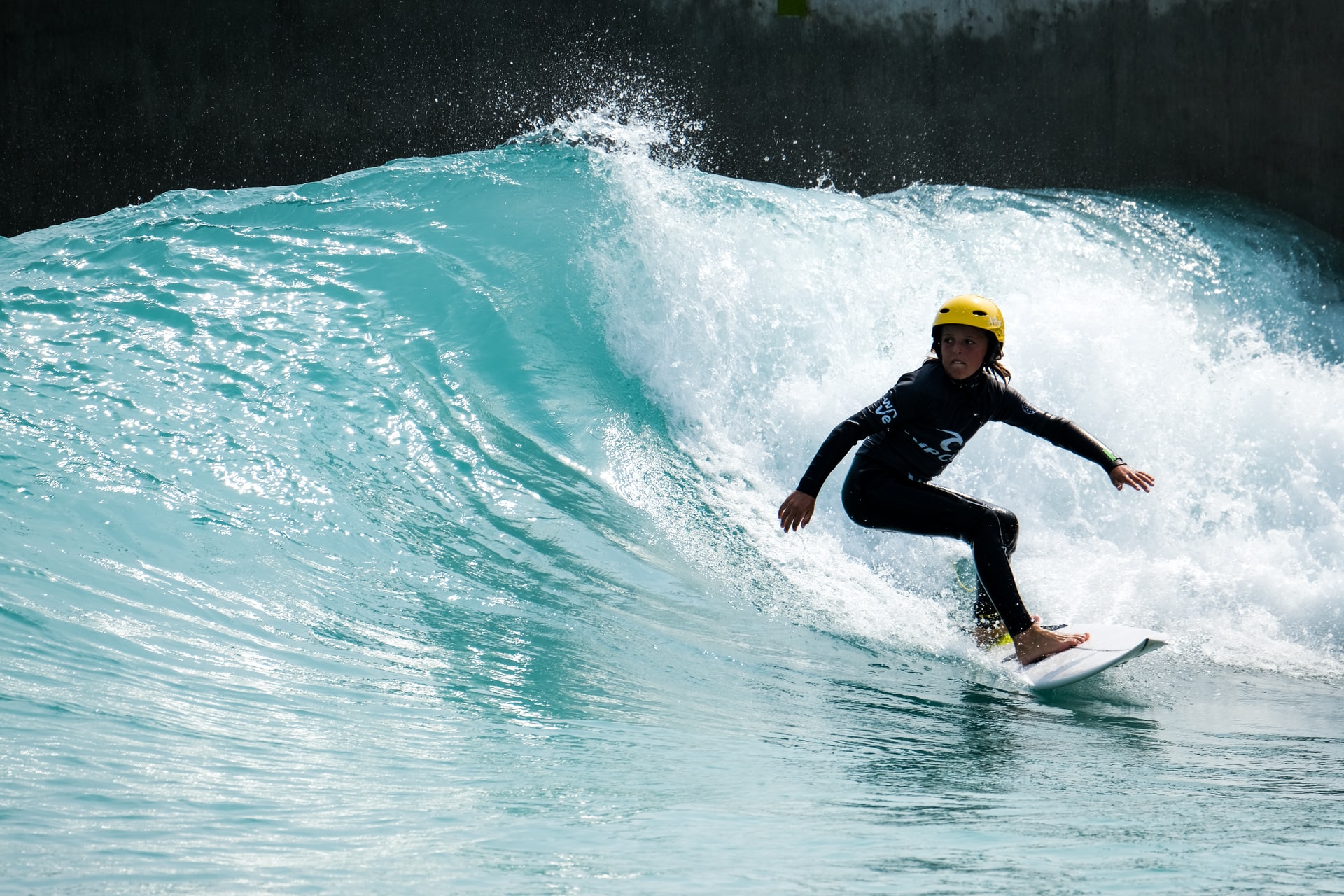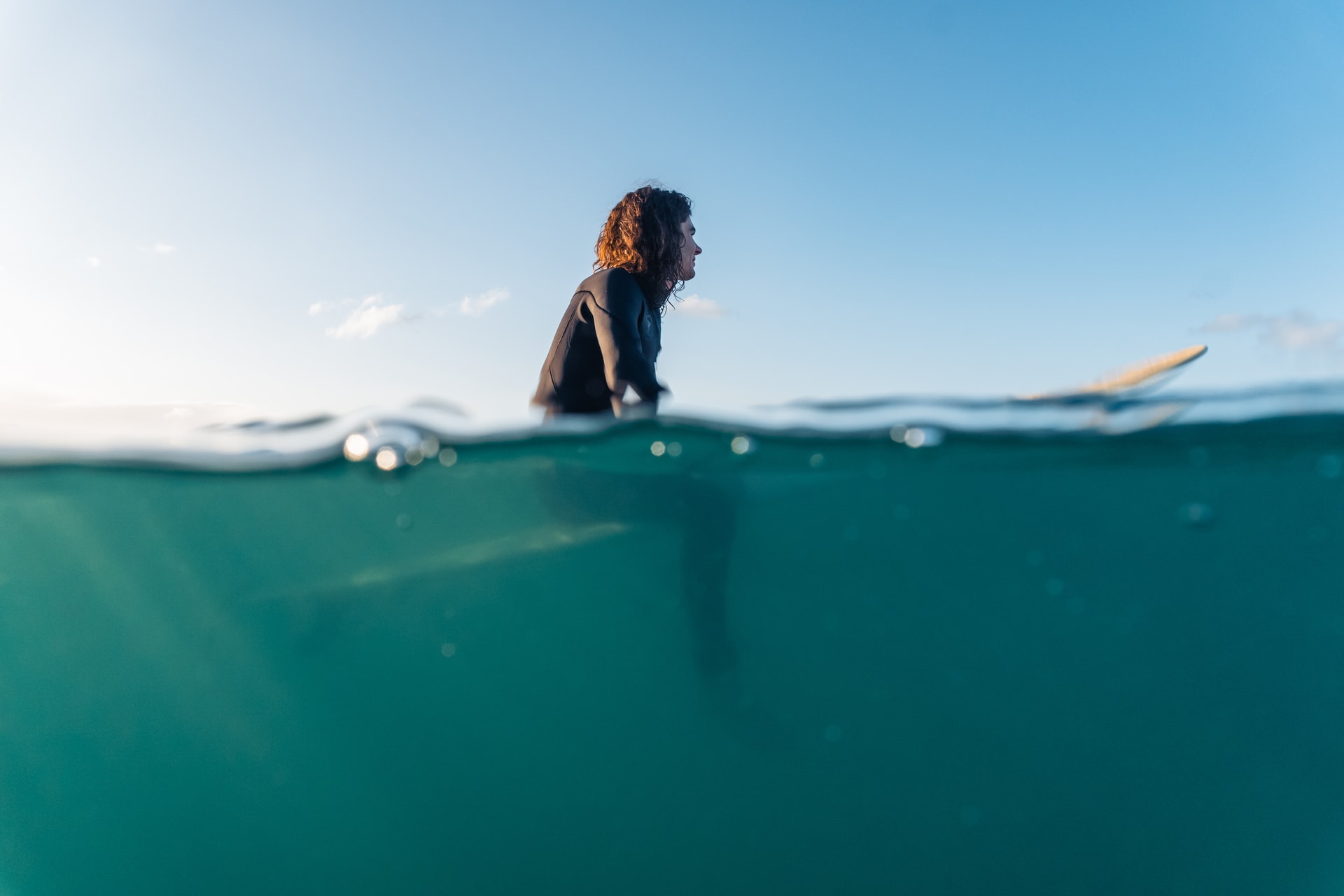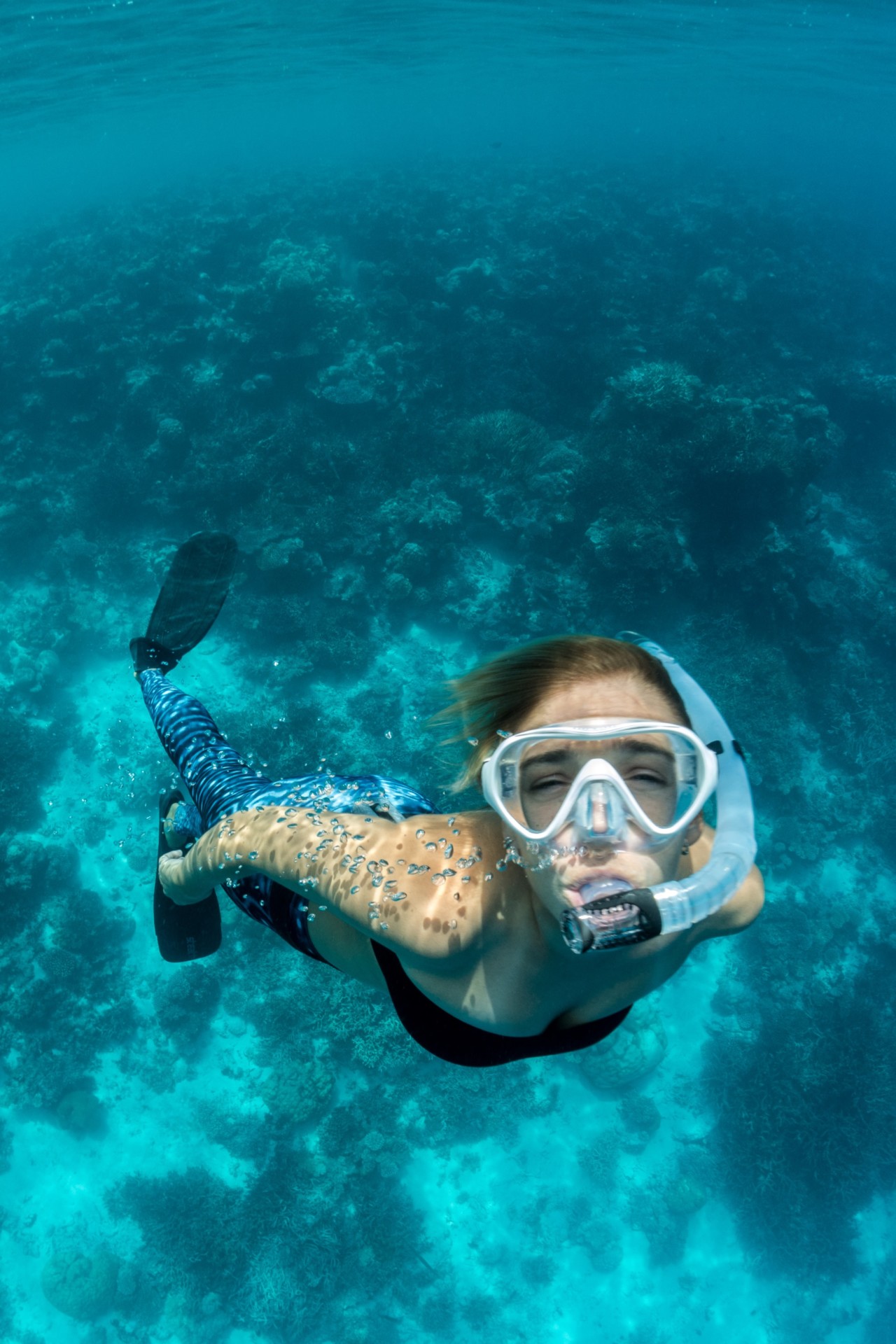Has being a non-swimmer held you back from trying one of the most popular watersports?
You don’t have to spend your time sitting on the sidelines of a beautiful lake or river. Kayaking is safe for people who don’t swim, but you will need to take some precautions.
As a non-swimmer, you’ll feel more confident when you know how to safely kayak with your friends or tour group.
- Can You Go Kayaking If You Can’t Swim?
- Where Can Non-Swimmers Go Kayaking?
- Will Kayaking Help You Learn to Swim?
- What If You’re Scared of the Water?
- Do Kayaks Tip Easily?
- Will a Life Jacket Keep You Afloat If You Can’t Swim?
- What Type of Life Jackets Are Recommended for Non-Swimmers?
- Can You Fall Off of a Kayak?
- Can You Get Back Into a Kayak From the Water?
- How Do I Safely Wait for a Rescue?
- What Else Can Non-Swimmers Do to Stay Safe? 7 Simple Tips
- Conclusion
- You Might Also Like…
Disclosure: this post contains affiliate links (clearly marked with ), which means we may earn a commission if you buy something through them, at no additional cost to you.
Can You Go Kayaking If You Can’t Swim?
People who can’t swim often stay away from doing anything on the water. Unfortunately, this holds you back from enjoying some of the most amazing experiences that you can have outdoors.
Being able to swim is not required to go kayaking. Some of the people who you may see out on kayaks are either non-swimmers or lack the skills to swim through certain water conditions.
The American Red Cross has found that many people overestimate their swimming abilities.
The organization claims that approximately 80% of people call themselves good swimmers, but only 56% of the people surveyed could perform the skills that they would need to save their lives.
If you can’t swim, then you are not alone. This point also underscores the importance of making sure that you kayak with a group of people who can accurately vouch for their swimming abilities.
Where Can Non-Swimmers Go Kayaking?
Technically, you can go kayaking anywhere that your boat will comfortably float.
However, you will want to be more selective about where you go kayaking as a non-swimmer.
A kayak can float in shallow water provided that it is not overloaded and the water is deep enough for you to paddle effectively.
Many non-swimmers start out in shallow streams and rivers where they feel confident that they could stand if they need to exit the boat. Keep in mind that even shallow water can have strong currents.
Fast moving water can knock you down if you exit your boat. A strong current also makes it hard to maneuver your kayak if you are still building your paddling skills.
If you choose to go kayaking on a shallow part of a lake or river, be mindful of the water conditions to avoid being swept out to deeper areas until you are ready.
Will Kayaking Help You Learn to Swim?
Getting into a kayak can help you overcome a few challenges that you might face with learning to swim.
Paddling engages multiple muscles in your back, shoulders and core. These are the same muscles that you will need to use while learning to swim.
Having strong muscles helps you to maintain better form as you learn swimming strokes. You’ll also have more stamina that helps you get more out of swimming lessons.
There is also something to be said for being motivated to learn to swim. Once you’ve discovered the joy of kayaking, you’ll want to improve your swimming skills so that you can explore more challenging waterways.
What If You’re Scared of the Water?
Considering that around 46% of Americans report being afraid of deep bodies of water, you are not alone with your fear.
The good news is that there are ways to overcome being scared of entering the water. It might help to start off with standing in shallow water where you can see the bottom.
Invite someone that you trust to provide you with support. Over time, you can increase your experiences to the point that you feel safe going out on a lake or river.
Do Kayaks Tip Easily?
Any kayak can potentially tip over and cause you to go into the water. Fortunately, tipping over is relatively rare provided that you choose the right type of kayak and monitor the water conditions.
A wider kayak is typically steadier than a slender model. This is because the wider base helps to distribute your weight more effectively.
Learning how to enter and exit your kayak also helps you to reduce your chances of tipping the boat over during the beginning and ending of your adventures.
Will a Life Jacket Keep You Afloat If You Can’t Swim?
A personal flotation device (PFD) is a must when you go kayaking, and this even applies to people with advanced swimming skills.
Depending upon where you choose to go kayaking, wearing a PFD may also be required by law or local regulations.
Life jackets are designed to be buoyant, which means that they help you stay afloat until help arrives. Keep in mind that all life jackets are not the same.
The U.S. Coastguard categorizes PFDs into specific types that provide different benefits and levels of protection against drowning.
What Type of Life Jackets Are Recommended for Non-Swimmers?
Most kayakers choose a Type 3 PFD. This type provides enough buoyancy to protect them if they become unconscious in the water, but it is also considered to be more comfortable for paddling compared to a bulkier PFD.
Type 1 PFDs are slightly bulkier, but they are designed to help turn a person over from a facedown position to a vertical one that provides a better chance of being able to breathe.
As a non-swimmer, you will want to choose a PFD that provides you with the right level of buoyancy without impeding your movement.
When you pick out a life jacket, make sure to try it on. Finding the right fit means that you’ll be more likely to use it every time you go kayaking. You also need to know that it won’t be so loose that it can slip off.
The style of your PFD also matters. Kayakers tend to prefer vest models that create plenty of space to move their arms for paddling.
Inflatable life jackets are available, but these are not typically recommended for non-swimmers because they can take extra time to inflate.
Can You Fall Off of a Kayak?
Falling out of a kayak is another issue that creates a bigger concern for non swimmers. There are two main types of kayaks, and these include sit-in and sit-on styles.
Beginner kayakers often prefer sit-on kayaks because they provide a quick way to exit the boat if it begins to capsize.
While this is true, you will need to consider that this style of boat makes it easier to fall off if you get hit by an unexpected wave or obstacle in the water.
Sit-in kayaks reduce the risk of you falling out, but it is possible to still find yourself floating outside of your boat.
Practicing what to do if you fall off of your kayak helps you to avoid panicking if it occurs.
Can You Get Back Into a Kayak From the Water?
New kayakers should practice getting into their kayak from the water while in a safe environment. You might want to practice in a large swimming pool or shallow body of water.
You’ll also want to practice this skill with a partner since there are ways to have someone else help you. There are multiple strategies to perform an assisted rescue.
A T-rescue is one of the most common ones that kayakers use. This involves having your paddling partner grab the bow of your boat and help get it upright in the water. With them steadying it, you’ll find it easier to reenter the kayak.
Ideally, you should practice both self and assisted rescues multiple times. This will help the maneuver come naturally during a time when you may be feeling fearful.
How Do I Safely Wait for a Rescue?
There may be times when your paddling partner might not be able to reach you immediately. As a non-swimmer, knowing what to do while you wait helps you to stay safe in a dangerous situation.
1. Hang On If You Can Reach Your Boat
Kayaks are designed to float whether they are upside down or upright. If you can reach your boat, then find a place on it where you can get a good grip. Holding on to your kayak also helps to increase your visibility.
2. Use Your PFD to Float Until Help Arrives
Your PFD literally becomes your lifeline while you wait for help. If you become separated from your kayak, try to get into an upright position that keeps as much of your face out of water as possible.
Remember to stay calm and avoid panicking. Continuing to take deep breaths as much as possible can help you to float easier and reduce your anxiety.
If possible, try to signal to others in your vicinity that you need help. You can shout, use a whistle or lift your hands in the air to increase awareness that you are in the water.
Once help arrives, you can then move forward with an assisted rescue that gets you either back in your boat or to the shore.
What Else Can Non-Swimmers Do to Stay Safe? 7 Simple Tips
Knowing how to handle an emergency situation in the water is important, but it is also helpful to know that there are many things that you can do to avoid problems in the first place.
1. Kayak With a Group
There is always increased safety in numbers when you are around bodies of water. Kayakers should avoid going on adventures alone since unexpected emergencies can always happen.
When you are unable to swim, you will need someone nearby to assist you if you end up in water that is too deep to stand up in.
Having multiple people kayaking with you decreases the amount of time that you have to wait for a rescue.
Kayaking with a group of experienced boaters also gives you the benefit of having people around who can identify potential dangers such as swift currents before you get into trouble.
2. Start With Short and Simple Trips
A common tip that kayakers share with beginners is to never go out further than you can swim back.
Since you can’t swim yet, you’ll want to further reduce how far you travel during your first several trips.
Try paddling along the edge of the shoreline in water that you can stand up in if you need to for your first several minutes of kayaking.
You’ll also want to choose a place to kayak where the water is predictable and calm. This helps you to avoid choppy water until you’ve developed your balance. You’ll also find it easier to stay afloat if you do go overboard.
3. Be Honest About Your Swimming Abilities
There is no shame in being a non-swimmer. You might not have learned how to swim as a child, or you may be working to overcome your fear of water.
Whatever the reason for you being a non-swimmer may be, this is not the time to hide it.
Being honest about your swimming abilities with your paddling partner or kayaking group helps everyone plan safer adventures.
Once a tour guide or friend knows that you can’t swim, they can keep a closer eye on you or assign a specific buddy to help keep you safe.
4. Double Check Your Safety Gear
Being unable to swim to the shore in an emergency means that you need to make sure that all of your safety gear is in top condition. Learn how to take care of your PFD so that it doesn’t deteriorate.
You’ll also want to make sure that your light sources work and that you have several ways to signal for help.
5. Monitor the Water and Weather Conditions
The conditions out on the water can change in an instant. Getting caught out on the lake during a sudden storm is the last thing you need when you aren’t a strong swimmer.
Check the weather and water conditions before you leave the house for your trip. Then, take another look at how things are going when you arrive to your kayaking location.
If anything doesn’t look right, such as seeing high water crests, then wait until conditions are better for your adventure.
6. Show Up Well-Rested and Hydrated
Your general physical and mental health makes a big difference in your ability to stay alert to potential hazards that could knock you out of the boat.
You also want to have the energy to keep yourself floating in the water if you have to wait for a rescue.
Sleep well the night before your trip, and remember to drink plenty of water. Dehydration can lead to symptoms such as dizziness that increase your risk of an accident.
7. Relax and Enjoy the Experience
Finally, you’ll want to remember that your confidence in your abilities plays a big part in helping you to be safe. Panicking can cause you to lose control of your kayak.
Try to focus on the beauty of the surrounding landscape rather than think about what could go wrong.
Keeping a positive attitude can help you develop the skills that you need to become an experienced kayaker despite your status as a non-swimmer.
Conclusion
Being unable to swim shouldn’t stop you from pursuing your dream of kayaking.
Choosing to push past your anxiety and climb into a kayak puts you in the driver’s seat for an exciting aquatic adventure.
You Might Also Like…
-
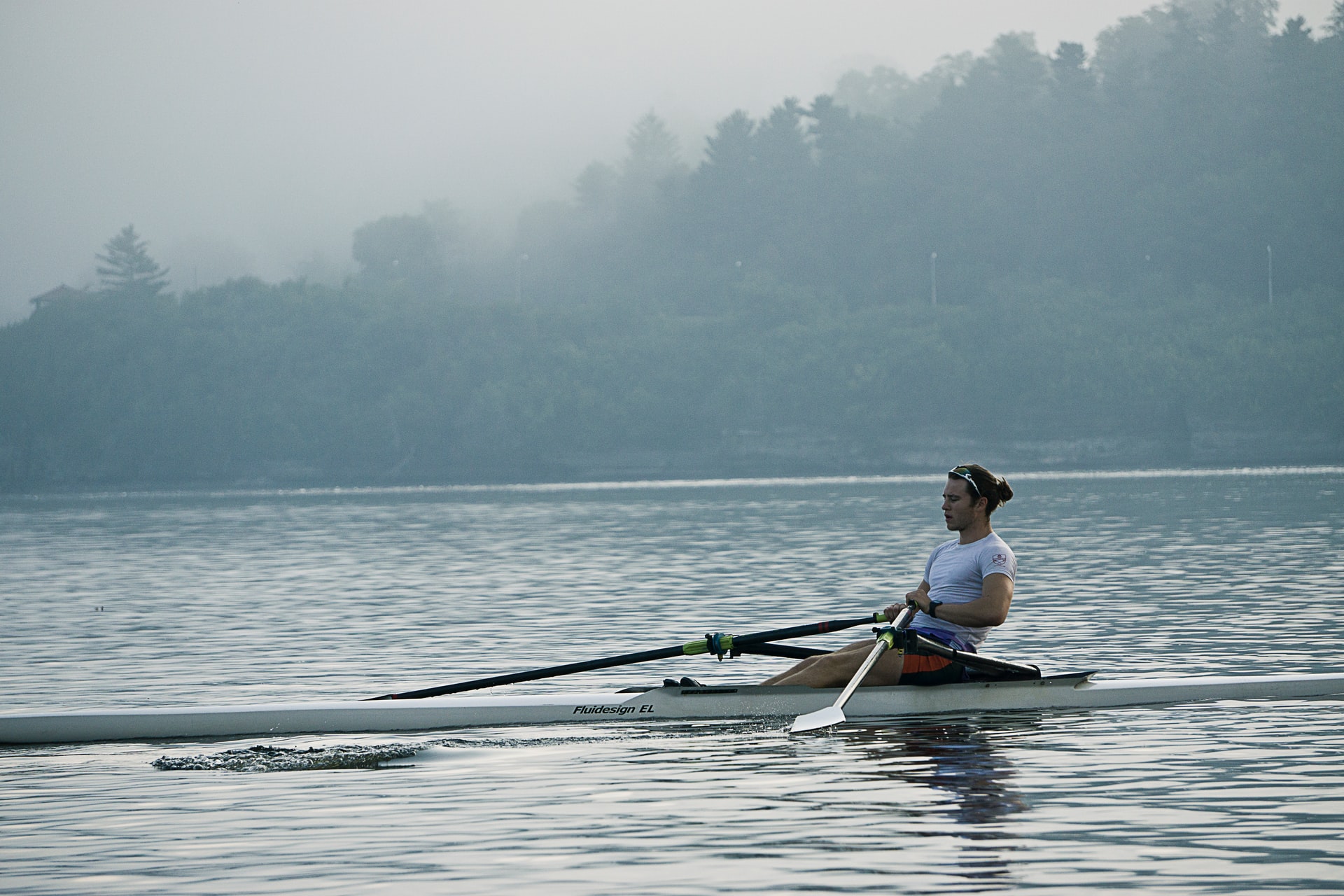
Kayaking Vs. Rowing: What’s the Difference? (8 Key Differences)
-
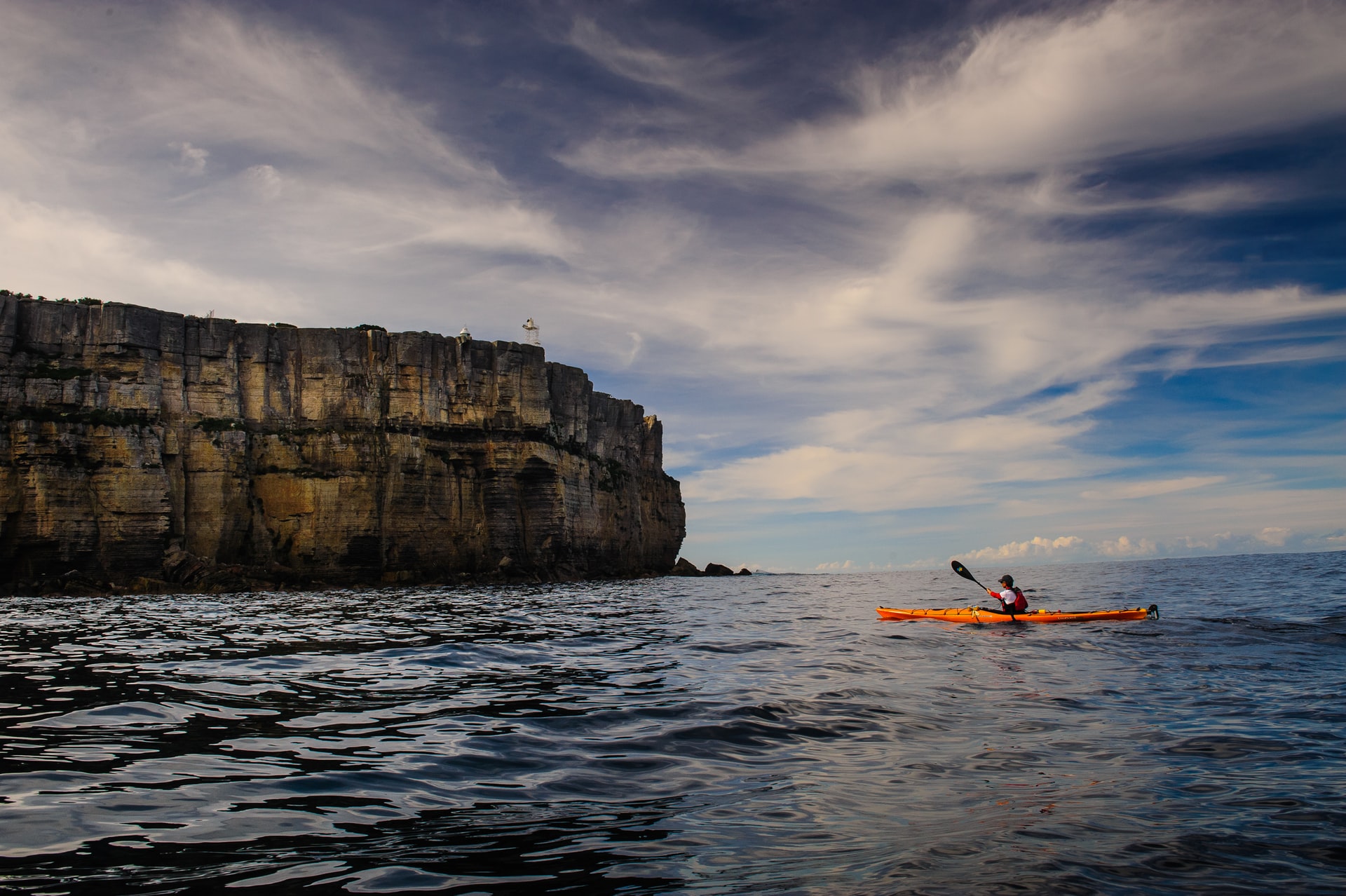
When Is It Too Windy for Kayaking? (Crucial Facts You Should Know)
-
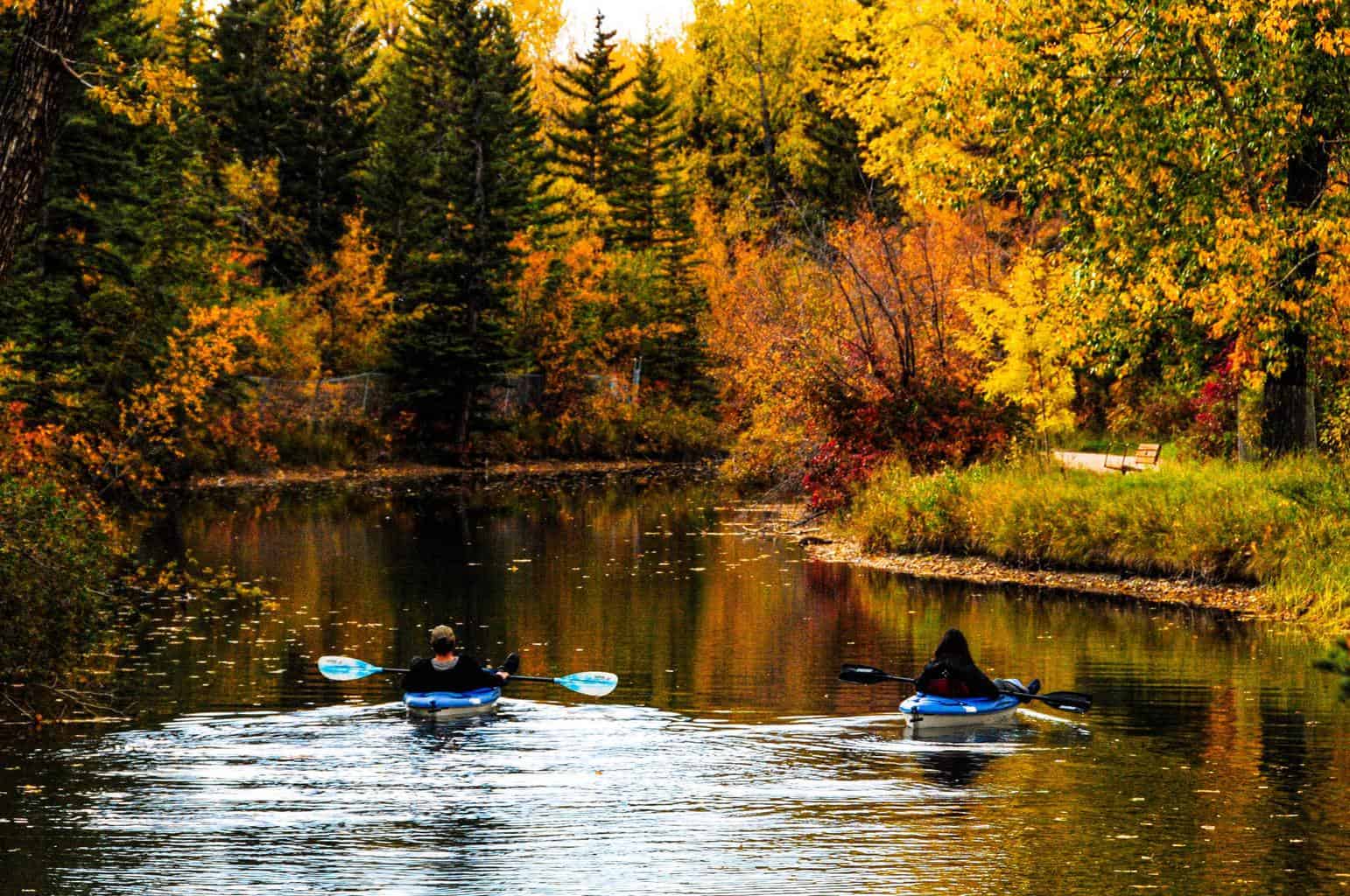
When to Go Kayaking? (What Every Kayaker Should Know)
-
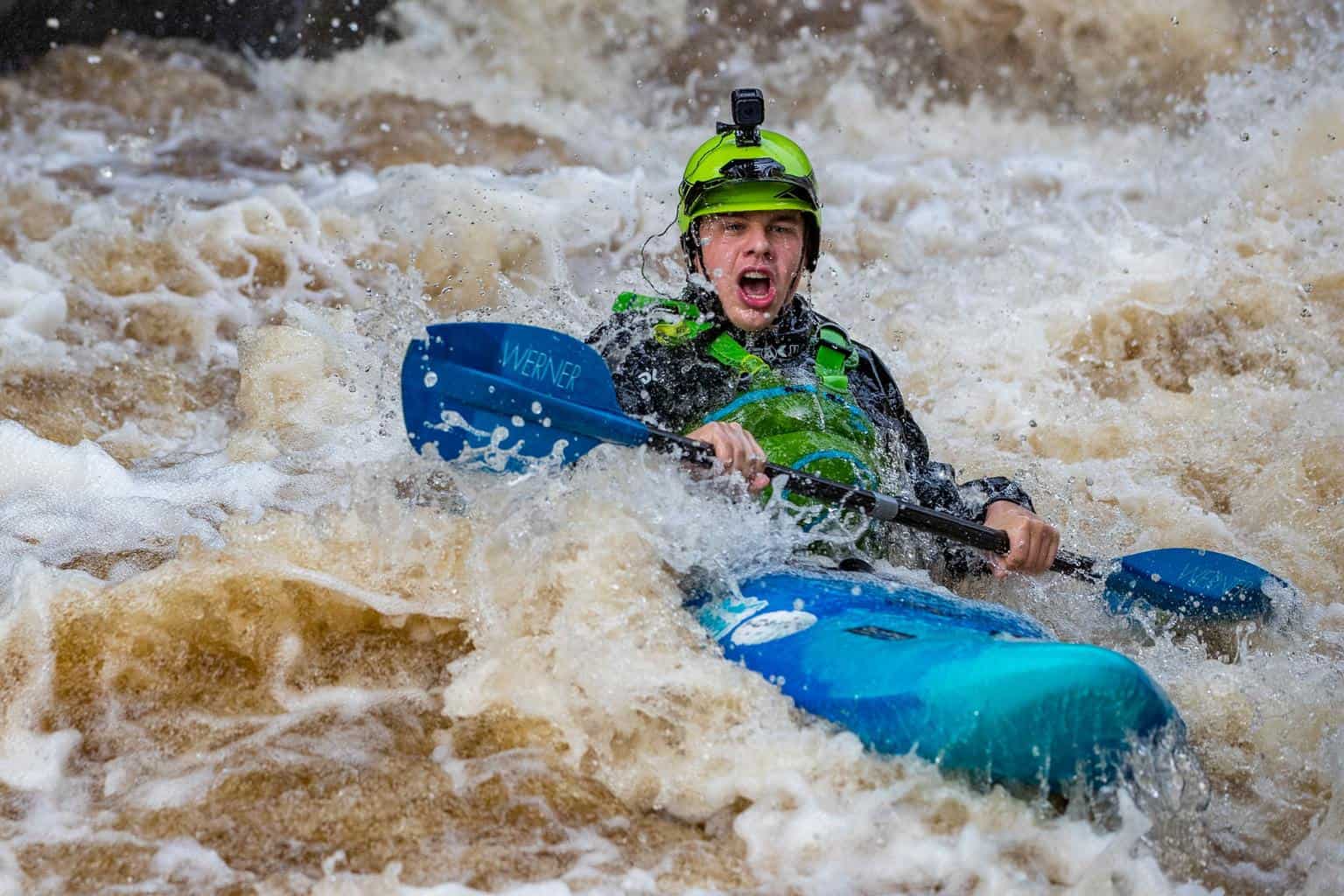
Will I Get Wet Kayaking? (Common Reasons & How to Stay Dry)
-
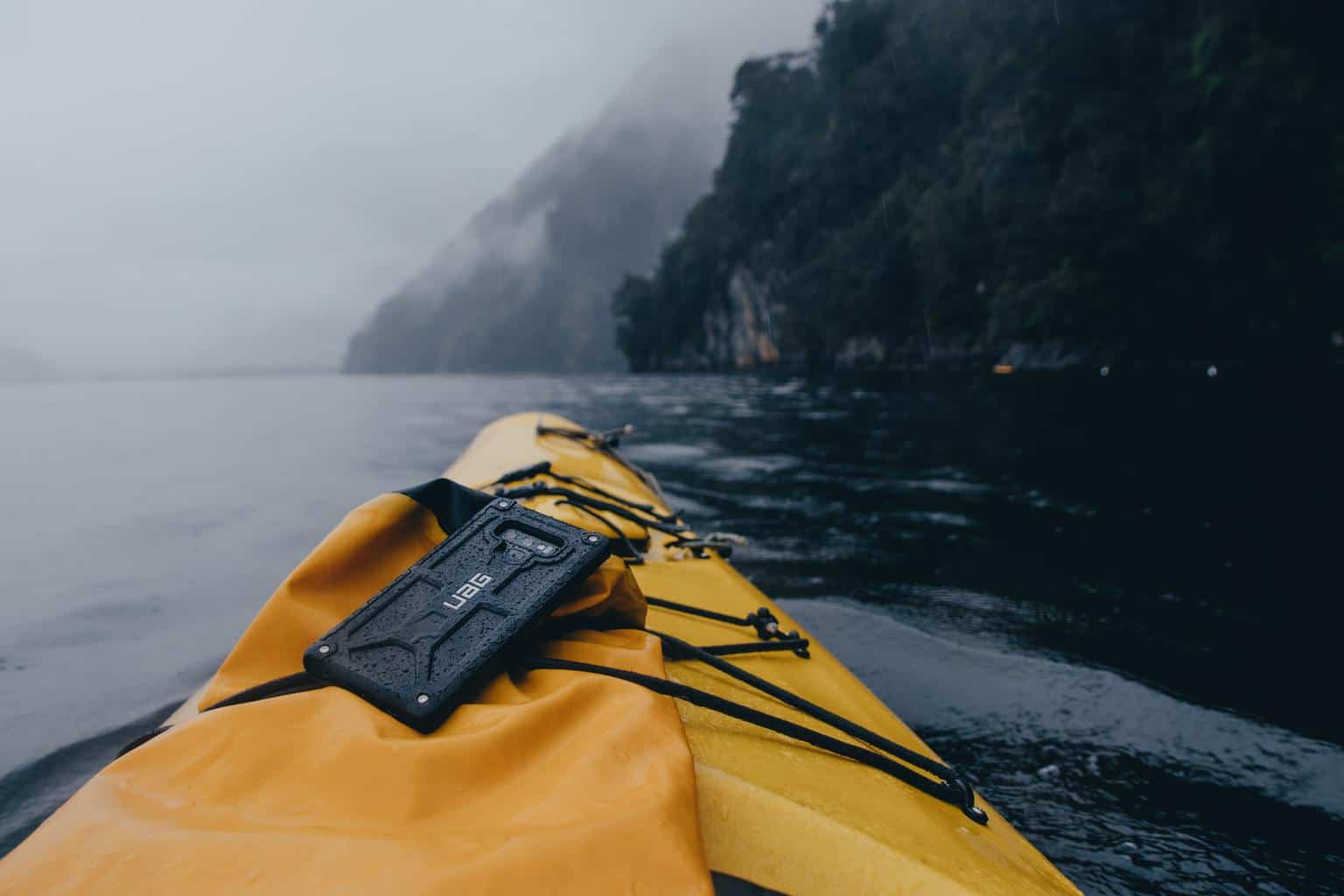
Should I Bring My Phone Kayaking? (7 Good Reasons)
-
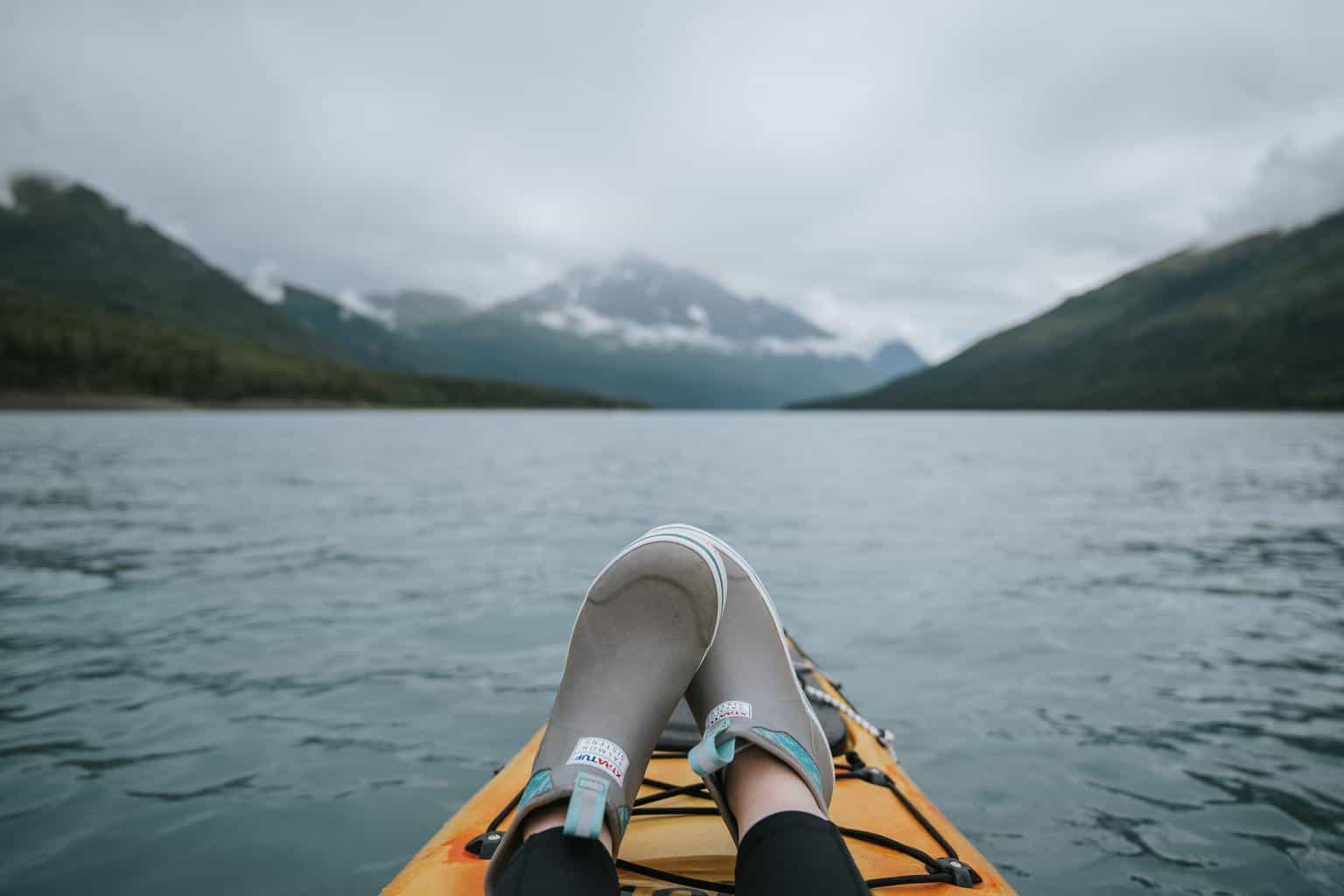
What Shoes to Wear Kayaking? (+ the Best Shoes for Your Needs)
-
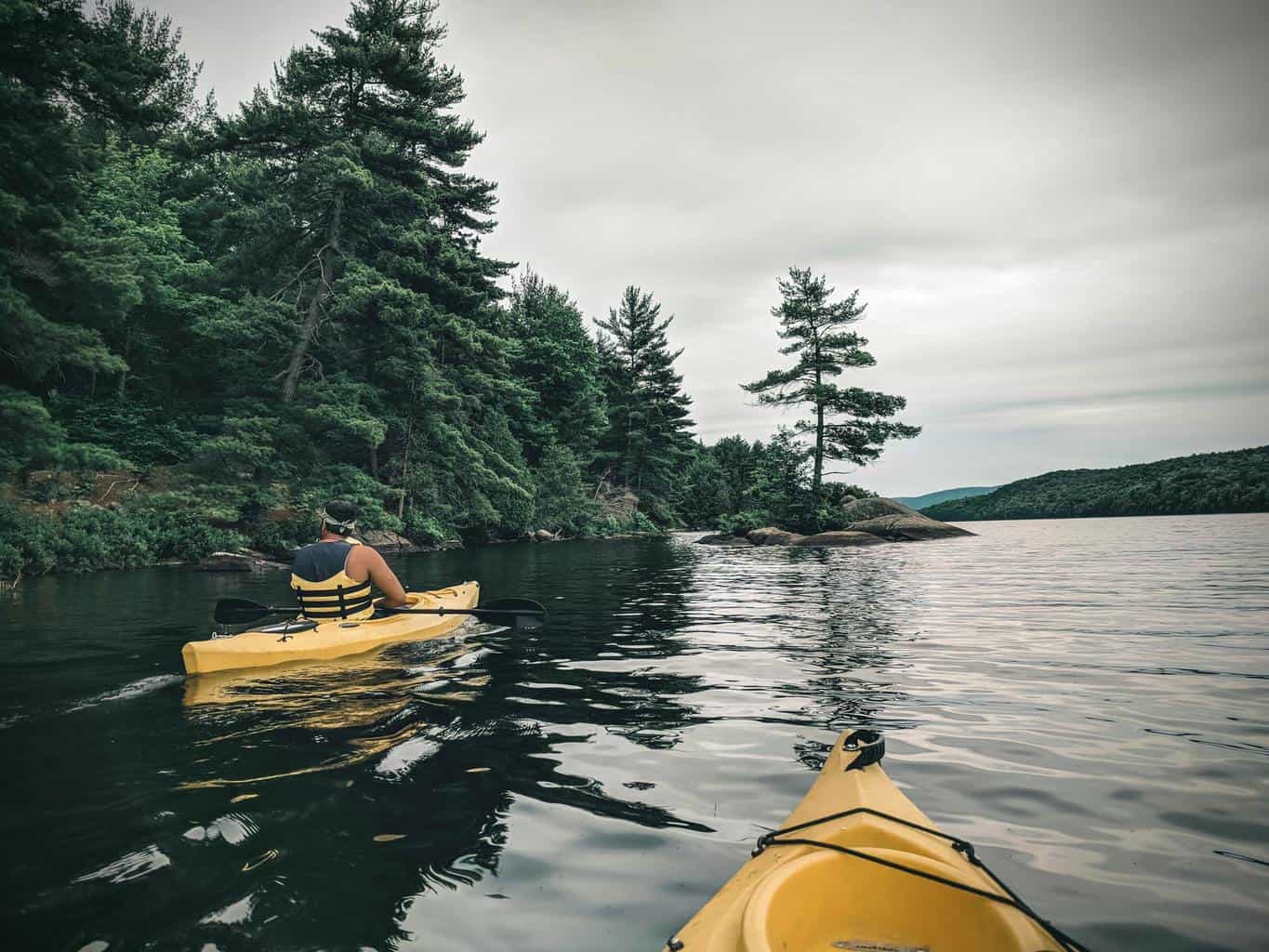
Can Kayaking Cause Chest Pain? (What Every Kayaker Should Know)
-
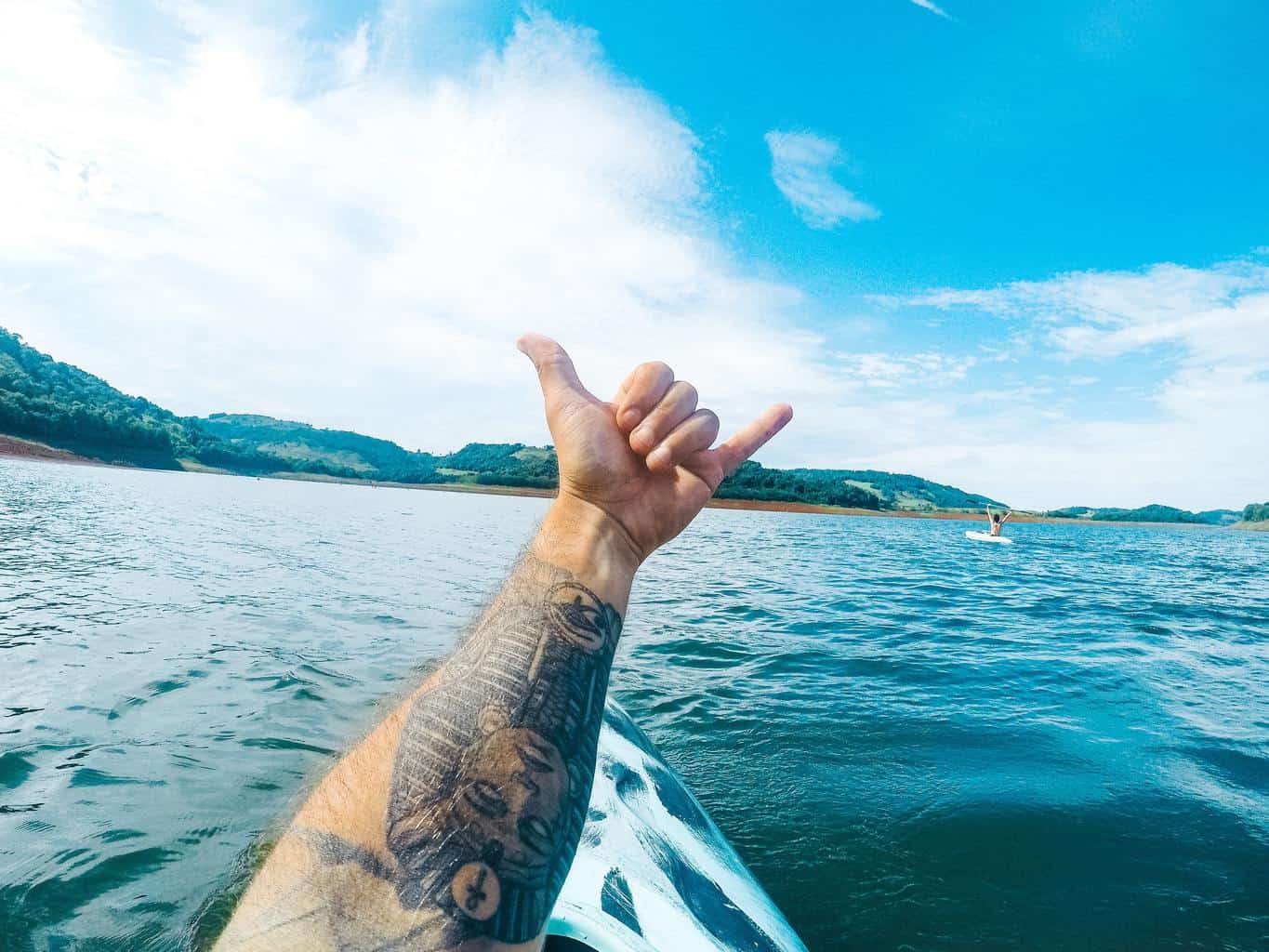
Can I Go Kayaking With a New Tattoo? (Facts You Should Know)
-
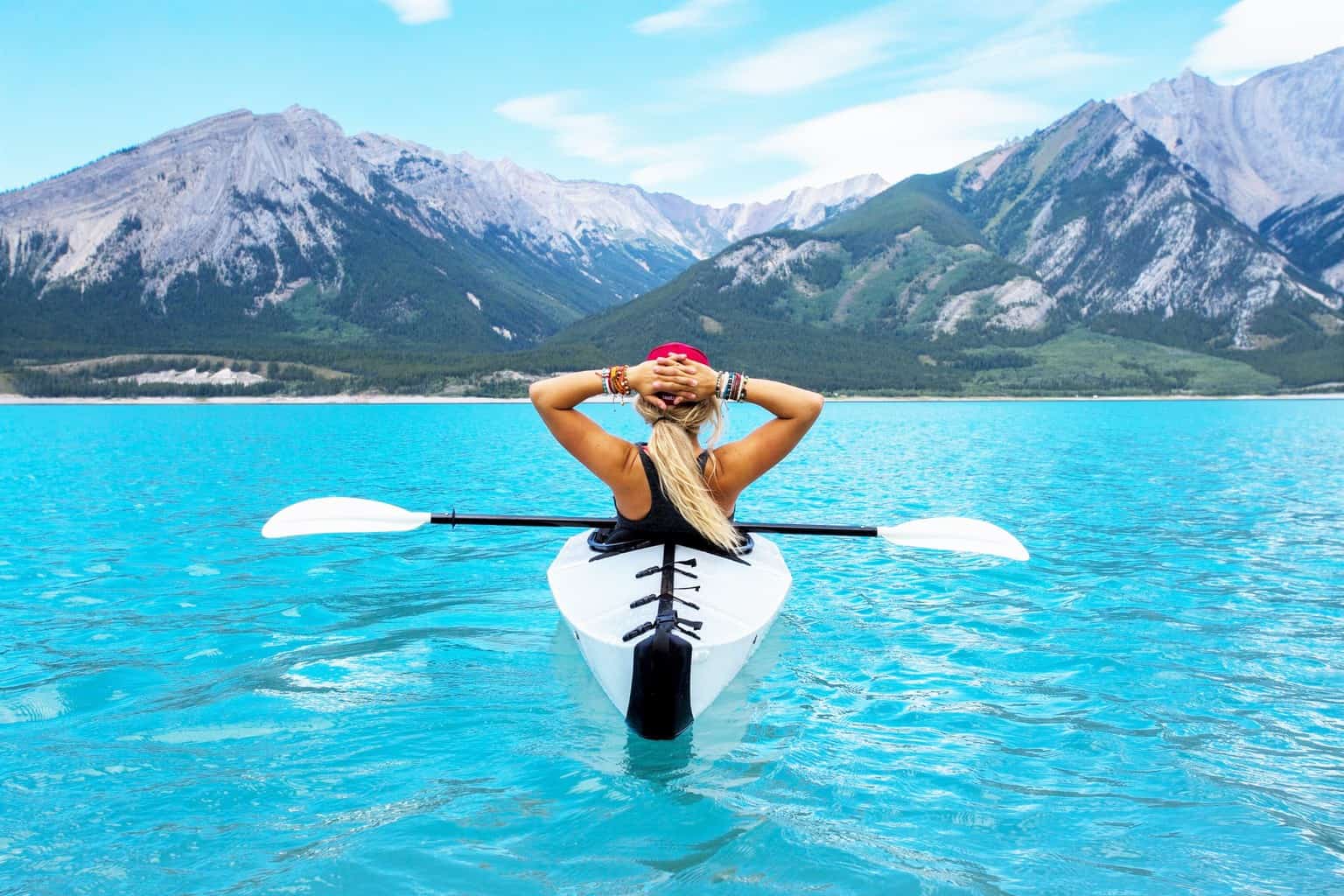
Can You Go Kayaking On Your Period? (+Practical Tips)
-
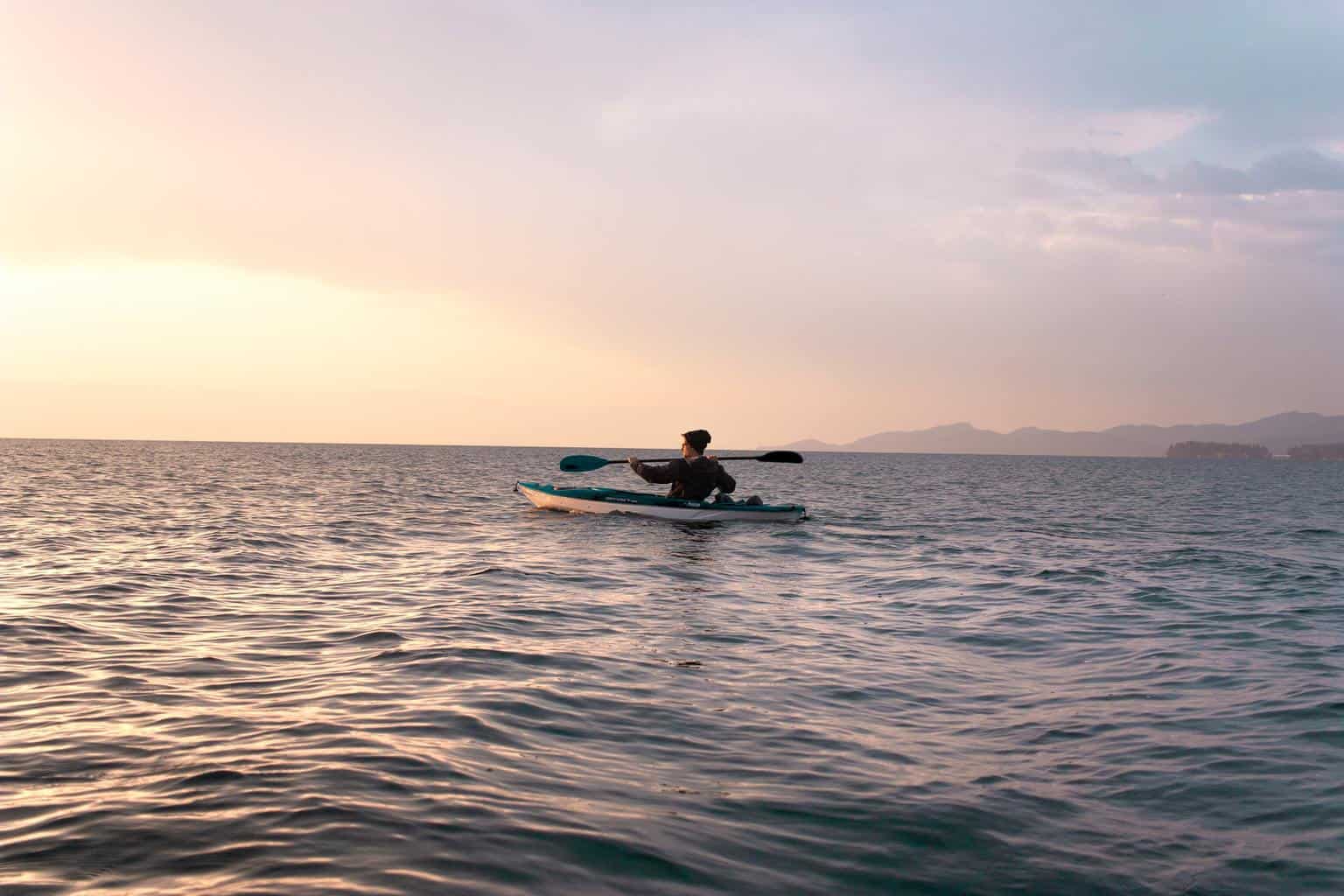
Can Kayaking Cause Hemorrhoids? (What Every Kayaker Should Know)
-
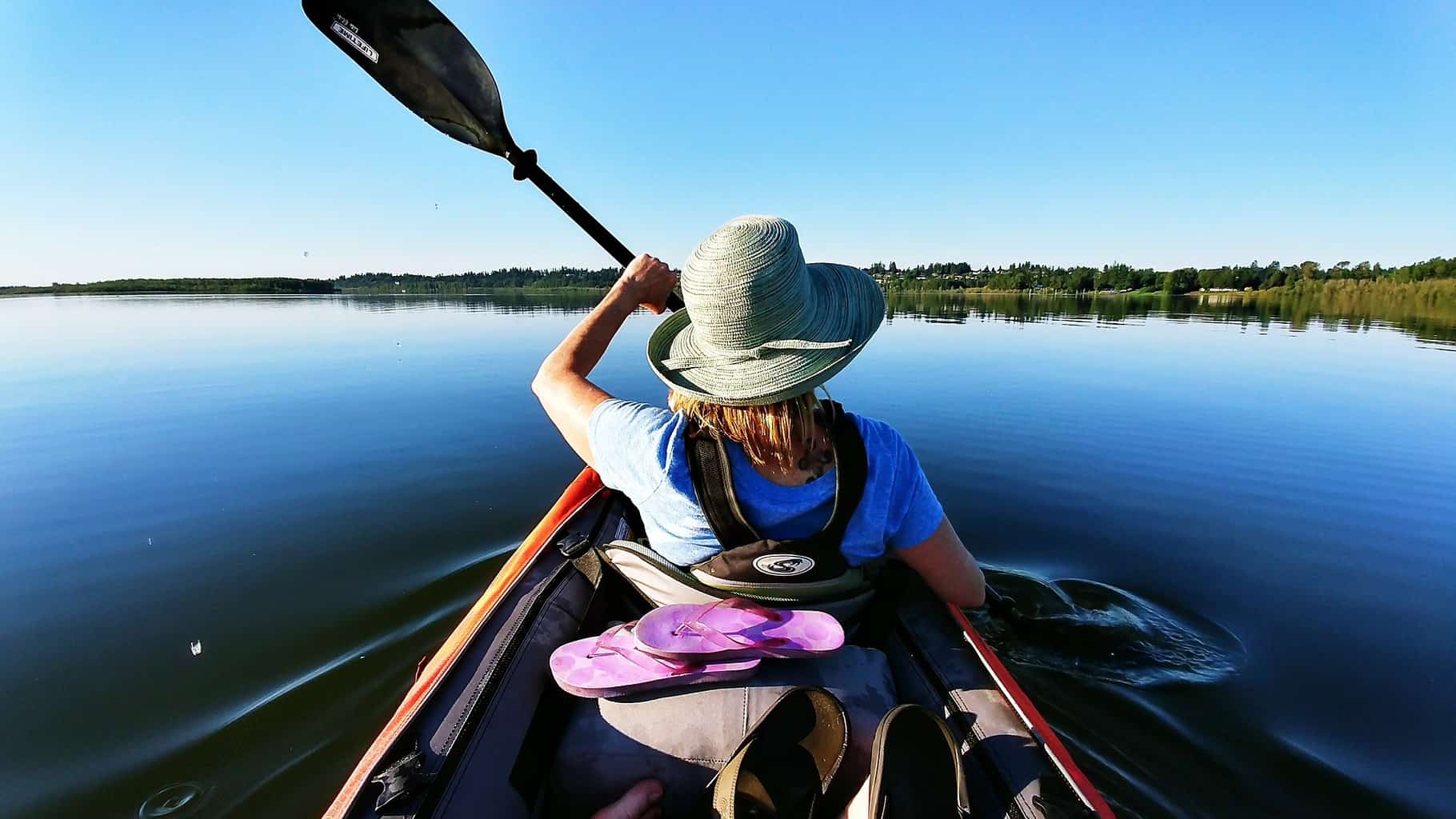
Can Kayaking Cause Tennis Elbow? (+8 Simple Tips to Avoid It)
-
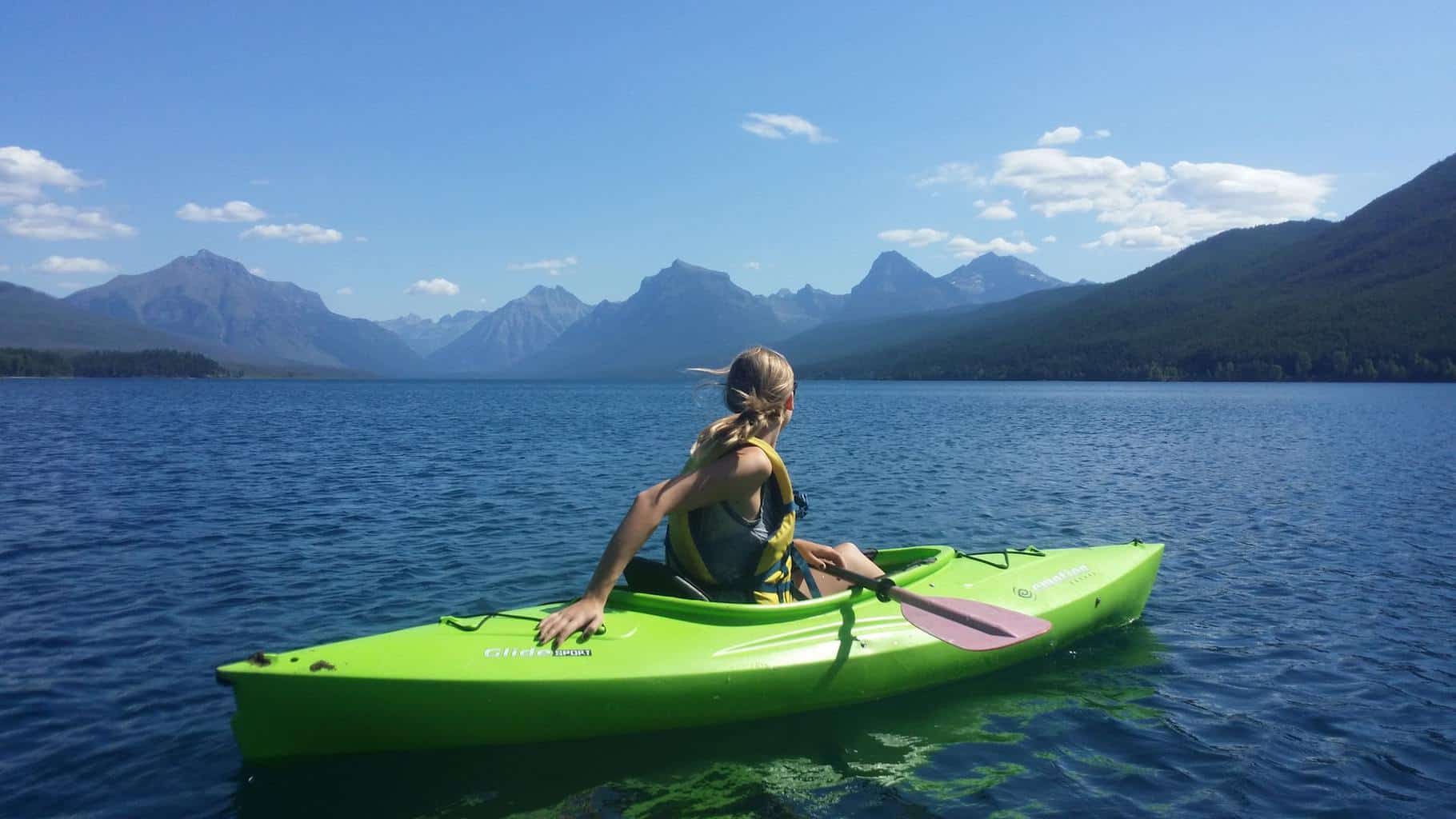
Can Kayaking Cause Sciatica? (+7 Tips to Avoid It)

